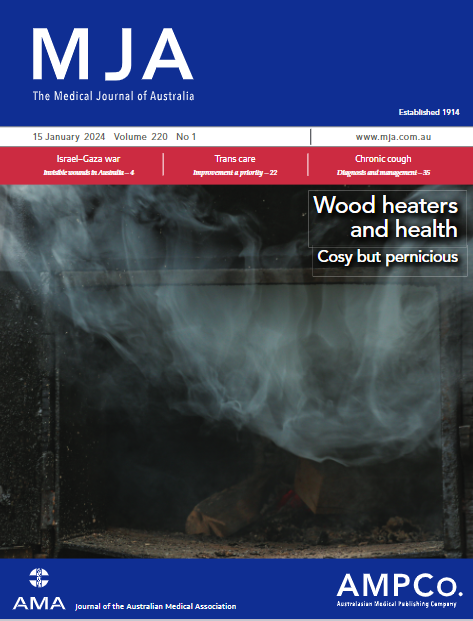Silicosis research priorities for health care, research, and health and safety professionals, and for people exposed to silica in Australia: a research priority setting exercise
Abstract
Objectives
To identify the silicosis research priorities of people living with silicosis, workers at risk of silicosis, their partners and caregivers, and of health professionals and researchers.
Study design
Research priority setting exercise; modified James Lind Alliance framework for research priority setting partnerships, comprising an online survey followed by two forums in which thematic analysis and nominal group analysis were used to establish a list of research priorities.
Setting, participants
People with or at risk of silicosis, their partners or caregivers (survey, online forum) and health care professionals, researchers, health and safety professionals (survey, in-person forum), recruited 14 April – 19 December 2023.
Main outcome measures
Research priorities in four pre-identified areas: prevention, screening and diagnosis, treatment, and living with and managing the impact of silicosis.
Results
A total of 164 survey respondents (105 medical or research professionals, 34 workers currently or formerly at risk of silicosis, eleven people with confirmed silicosis, and fourteen partners or caregivers) identified 47 key research topics. Fifty-three health care professionals and thirteen people with or at risk of silicosis and their caregivers then ranked the research topics and developed research questions at the two forums. The highest ranked research priorities were research into assessment and optimisation of the hierarchy of controls, compliance and regulation, establishing minimum standards and developing innovative screening methods, early diagnosis, development of effective treatments, identification of biomarkers for risk of progression, developing an optimal care model that includes mental health care, and estimating the economic impact of silicosis. Both participant groups agreed that research into workplace controls is important, as is improving education and awareness, compliance with preventive measures, and screening and diagnosis, including nationally consistent screening and diagnosis practices. The professional participants rated research into silicosis pathogenesis and biomarkers and technological considerations higher than workers and their carers, who focused more on the barriers for and attitudes of workers, specific treatments, and managing symptoms.
Conclusions
Research into eliminating exposure to silica, early diagnosis of silicosis, preventing disease progression, and reducing the impact of disease were the top research priorities for people with professional or personal interests in silicosis. Our findings should guide research directions and inform policy development.


 求助内容:
求助内容: 应助结果提醒方式:
应助结果提醒方式:


